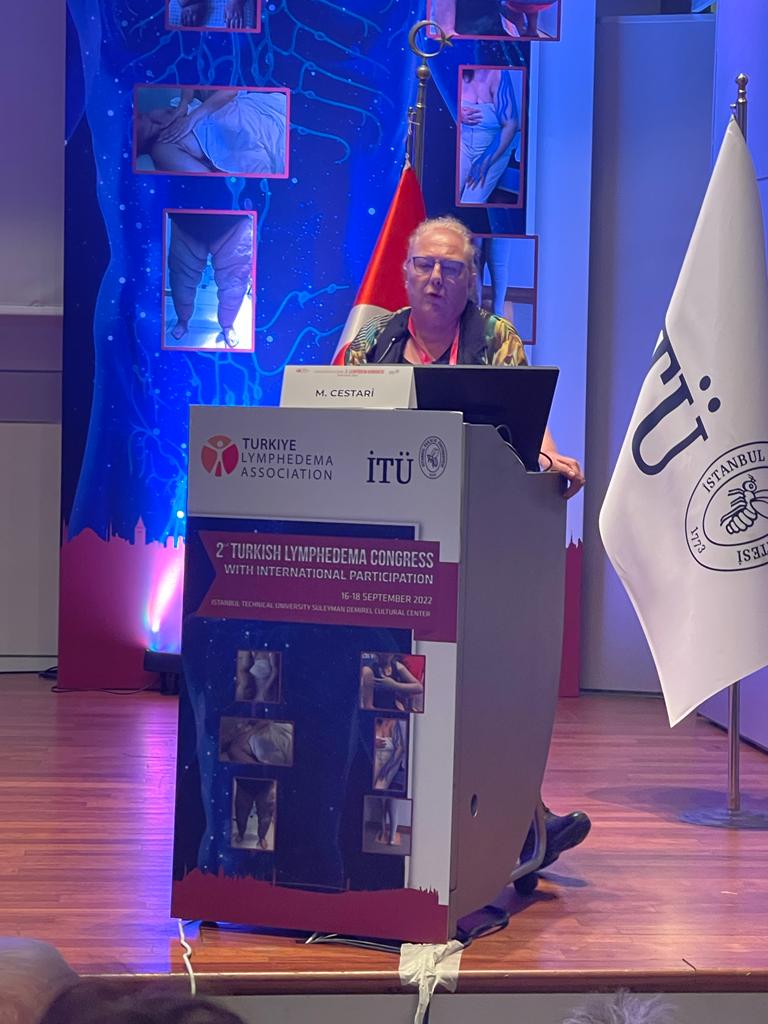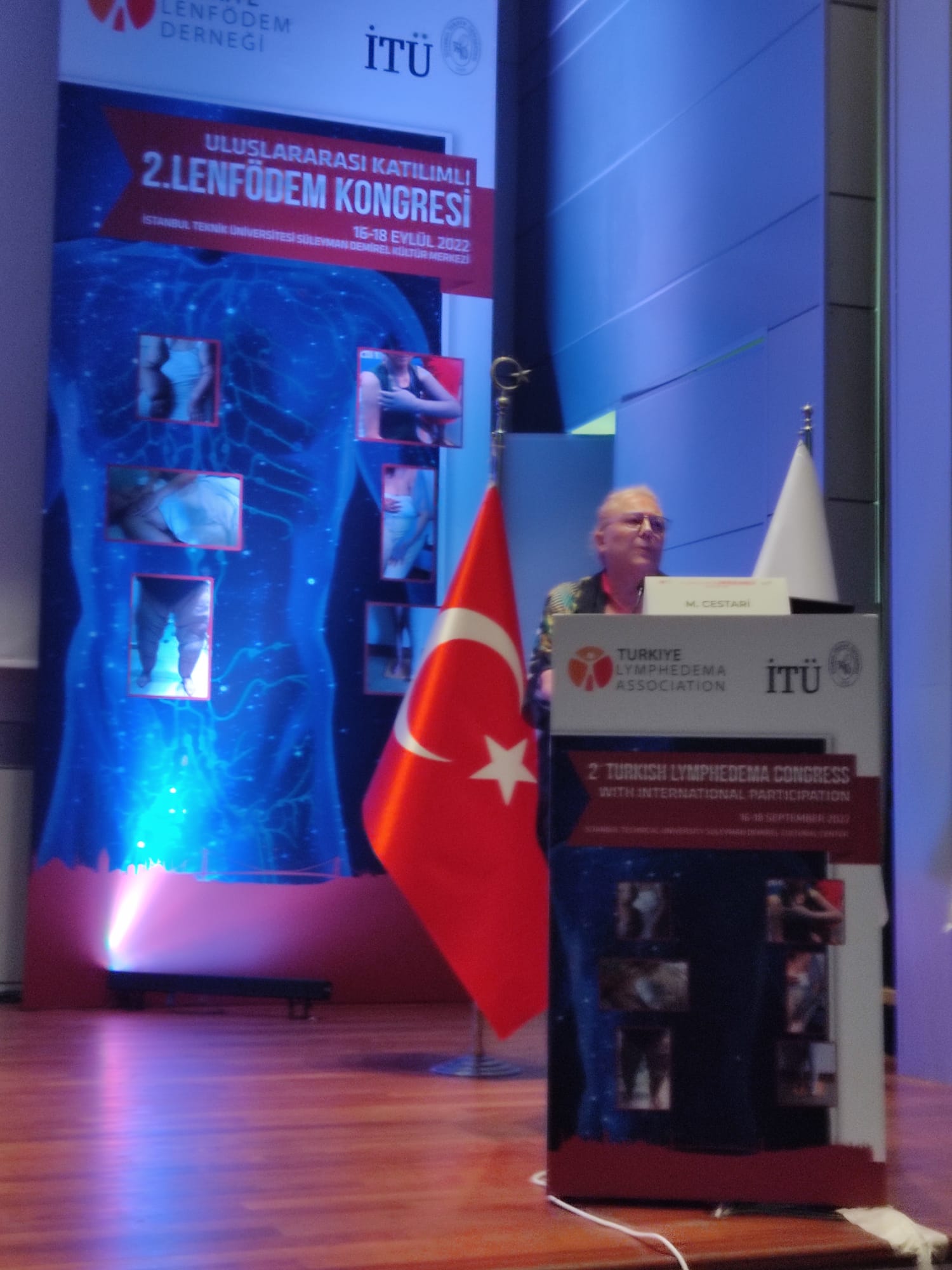Title & authors
Abstract Similar articles
Cited by
Related information
LinkOut - more resources
Lymphat Res Biol . 2023 Oct;21(5):485-487. doi: 10.1089/lrb.2022.0082. Epub 2023 Mar 28.
Lipedema: Usefulness of 3D Ultrasound Diagnostics
Marina Cestari 1
Affiliations PMID: 36976792 DOI: 10.1089/lrb.2022.0082
Abstract
Background: To define the usefulness of three-dimensional (3D) ultrasound diagnostics for lipedema. Methods and Results: In this study, starting in May 2021, it was decided to apply 3D ultrasound diagnostics in the evaluation of the tissue in 40 patients affected with lipedema (stage I-II-III) who arrived at the Pianeta Linfedema Study Centre. Furthermore, subjects with lipohypertrophy were also included in this study to evaluate the structural features of the adipo-fascia and eventual structural similarity with lipedema. With an adequate instrument (SonoScape 20-3D ultrasound) and probe (17 MHz) on bilateral symmetric marker points, the epidermis-dermis complex and subcutaneous tissue were evaluated. In all patients with lipedema, a normal ultrasound representation of the epidermis-dermis complex, the thickness of subcutaneous tissue, due to hypertrophy of the adipose lobules and of interlobular connective septa, the thickness of the fibers that connect the derma to superficial fascia, and the thickness of the superficial fascia itself as well as of the deep fascia have been highlighted; moreover, fibrotic connective areas in the connective septa that correspond to the palpable nodules has been highlighted. The structural feature, present in all the clinical stages, unexpectedly, was the presence along the superficial fascia of anechogenicity due to the presence of fluid. In lipohypertrophy, structural characteristics similar to those in the initial stage of lipedema have been highlighted. Conclusion: 3D ultrasound diagnostics have led to the discovery of important features of adipo-fascia in lipedema not previously highlighted by two-dimensional ultrasound diagnostic studies.
Keywords: 2D ultrasound diagnostics; 3D ultrasound diagnostics; lipedema; lipohypertrophy.
PubMed Disclaimer
Lymphoedema is a life-long condition and the rehabilitative therapeutic model of holistic approach has to include the self-management considering that it is designed to achieve not only short-medium term results, but also in the long term.
Self-management is achieved through therapeutic education (understanding of cause-evolution-cure of lymphoedema), which requires patient's adherence, and caregiver if necessary, which is reachable through an optimal communication (demonstration of empathy-ability to listen and understand discomfort-use of simple language), the evaluation of the characteristics of the patient /caregiver (age, psychological condition, cultural condition) and the respect for their latency time (understand a concept-be aware of it-put it into practice).
Therapeutic education includes information on hygienic-behavioral rules, self-assessment of oedema, skin care, body weight control, physical activity, combined self-management (manual self-drainage, self-bandage), management of the elastic brace.
With regards to the self-efficacy tool for children the visual art methodology is useful for the description of living and self-managing, while for teenagers the use of cameras to take photos is more useful.
Parents experienced difficulty before receiving a diagnosis and an appropriate treatment and younger children found self-management boring and restrictive and felt negative about the limitations imposed by their parents due to the fear of worsening of lymphoedema.


La diagnosi di lipedema è basata sulla valutazione clinica, ma l’esame strumentale ecografico ad alta risoluzione, non invasivo, ripetibile ed affidabile, relativamente semplice, anche se operatore dipendente, risulta utile nello studio tissutale sopra-fasciale utilizzando apparecchiature ad alta tecnologia con sonde adeguate lineari ad alta frequenza di emissione del fascio ultrasonoro (>10 MHz).
Nel lipedema, con la sonda posta direttamente sulla cute con abbondante gel e utilizzando scansioni longitudinali e trasversali su punti markers costanti, lo studio ecografico tissutale comprende il complesso epidermide-derma ed il tessuto sottocutaneo.
In questo studio si è osservato una normale rappresentazione ecografica del complesso epidermide-derma (normale ecogenicità e spessore) ed un aumento dello spessore del tessuto sottocutaneo per ipertrofia dei lobuli adiposi adesi ed ipoecogeni,
Leggi tutto: La valutazione 3D nella pratica clinica: approccio preliminare
Background
The diagnosis of Lipedema is based on clinical evaluation, but the high-resolution, non-invasive, repeatable and reliable ultrasound instrumental examination, relatively simple, even if operator dependent, is useful in the supra-fascial tissue study, using high-tech equipment with suitable high frequency linear probe.
Aim of the work
An evolution of standard ultrasound is high-quality three-dimensional imaging which, having a view on three planes of space, is interesting in the tissue structural study also for the possible processing of the image with appropriate software. For this reason, we have decided to apply this method in the tissue evaluation of lipedema.
Material and methods
In clinical stage I-II-III lipedema, with adequate the probe (17 MHz) placed directly on the skin, and longitudinal-transversal scans on constant markers along the limbs,
Leggi tutto: Lipedema:usefulness of 3D ultrasound diagnostics
Objective
Lymphoedema is a chronic disease with an evolutionary course without a suitable management. For this reason we have decided to analyze the coexistence of lymphoedema with Covid-19 pandemic.
Material-Methods
During the 2020 lockdown there was the complete suspension of the rehabilitative treatment, public and private, and therefore the patients did not have a response to their disease.
In our centre, only the lymphologist examined patients with urgent clinical needs, after a triage call, but the team was always available to provide advice through phone-video calls.
In the post-lockdown, according to the intermittent government restrictions, we started again the rehabilitative treatments (environmental-personal hygiene rules, protective devices, U.V. air filtration, phone triage).
For patients in follow-up, in this Covid-19 pandemic, the vademecum has always talked about self-management that we have always included in the rehabilitative project as a therapeutic education (self-assessment of oedema, skin care, breathing exercises, manual self-drainage, home pressotherapy, self-bandaging, management of the elastic brace, respect of behavioural-rules, correct diet, physical activity).
Results
In the first phase, clinical worsening in patients (26%), was due to psychological distress, family problems and economic concerns that induced less-non attention to self-management previously learned.
Psychological distress for the fear of contagion, still leads some patients to postpone rehabilitative treatment.
Conclusions
During the lockdown there was the suspension of the rehabilitative treatment, but urgent clinical evaluation and phone-video calls really limited the clinical worsening. Following this, we are carrying out the rehabilitative treatment in environmental, team and patient safety.
Leggi tutto: Covid-19 pandemic and Lymphoedema…what coexistence?
